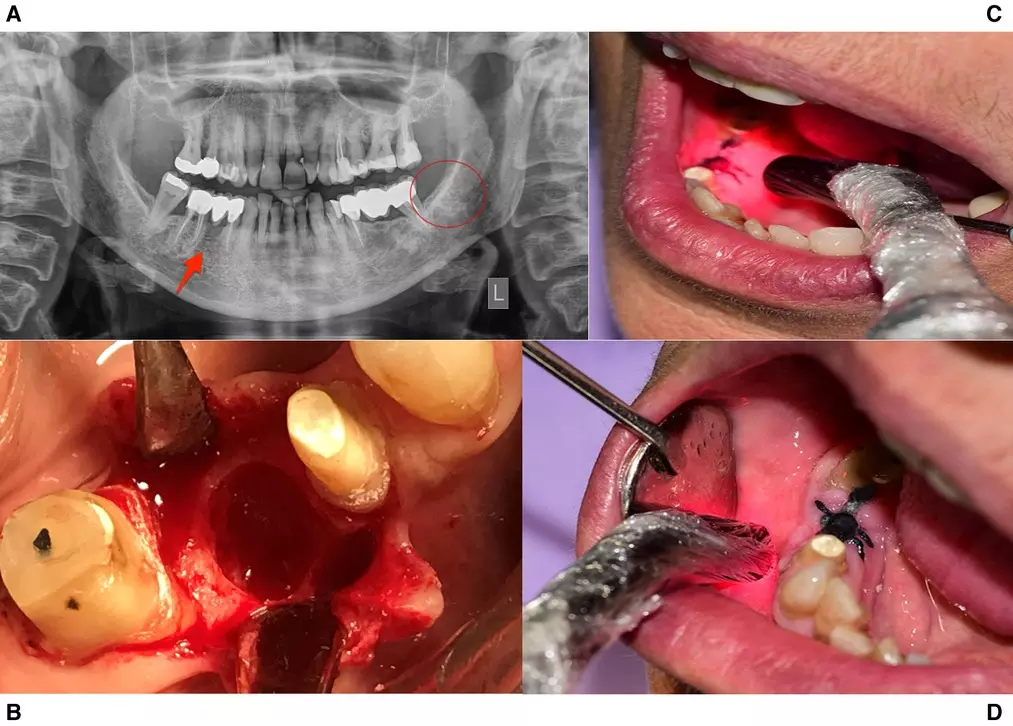By Dr. Shravani Dali
Researchers have found in a new study that integration of local and systemic photobiomodulation therapy (PBM-T) significantly reduces the need for postoperative pain medication, accelerates healing, and enhances quality of life in patients receiving single-tooth implants in healed sites. Clinically, systemic PBM-T amplifies the benefits of local PBM-T, making it a valuable adjunct in dental implant procedures.A study was done to evaluate the effects of local and systemic photobiomodulation (PBM-T) after dental surgery for single-tooth implant placement in healed sites. Fifty-one patients were included and randomly assigned to 2 groups: PBM-T (n = 26), with local and systemic PBM-T application immediately after implant site drilling and suturing; and control group (n = 25), with PBM-T simulation. The parameters used for local PBM-T were low-intensity laser diode (Therapy EC, DMC, São Carlos, SP, Brazil), 1 J of energy per point for 10 s, energy density of 10.20 J/cm², output spot of 0.09842 cm², infrared wavelength of 808 nm and power of 100 mW/cm². Systemic PBM-T was performed using the same low-intensity laser diode. Patients received a single 10-minute systemic transdermal irradiation over the radial artery immediately after suturing, with a total energy of 60 J, energy density of 306.12 J/cm², wavelength of 660 nm, and power of 100 mW. Postoperative pain via visual analog scale (VAS), analgesic use, healing, and quality of life using the Oral Health Impact Profile (OHIP-14) were assessed. Results were analyzed using the Kruskal-Wallis test (Student–Newman–Keuls) and chi-square test. Results: There was no significant difference in VAS pain scores between the control and PBM-T groups (p = 0.5217). The number of analgesics taken by participants in the control group was 2.37 times higher than that taken by the PBM-T group. A significant difference in healing grades was observed between the control and PBM-T groups at both the 3-day and 7-day assessments (p = 0.0029 and p = 0.0002, respectively), with the PBM-T group demonstrating marked improvement. There was no negative impact on quality of life at any point after implant placement in the PBM-T group, as all OHIP-14 scores remained lower than those obtained before surgery. The combined use of local and systemic PBM-T decreased the need for postoperative analgesics, enhanced postoperative healing, and improved quality of life for patients undergoing single-tooth implant placement in healed sites. The clinical application of systemic PBM-T enhances the effects of local PBM-T after dental surgery for implant placement.Reference:Pucca, D.S., Pinheiro, S.L. Evaluation of local and systemic photobiomodulation in only single-implant insertion: a randomized clinical trial. Oral Maxillofac Surg 29, 125 (2025). https://doi.org/10.1007/s10006-025-01424-5Keywords:Combined, Local, Systemic, PBM-T, Improves, Outcomes, After, Dental, Implant Surgery, Study, Pucca, D.S., Pinheiro, S.L, Dental implants, Low intensity laser t, herapy, Laser, Photobiomodulation, ILIB, Pain management
